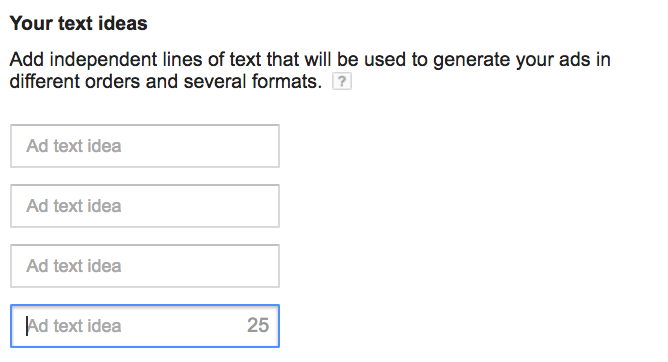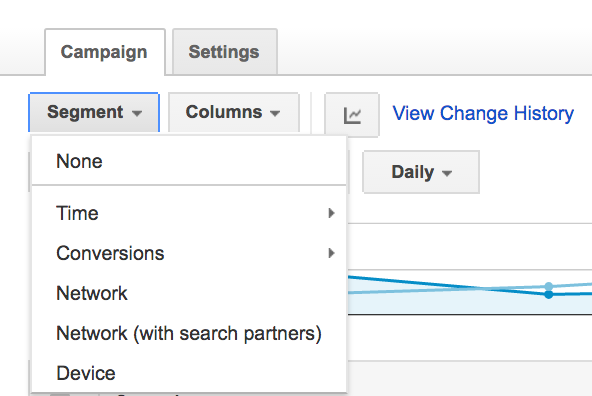How many apps do you have on your smartphone or tablet? How many of those apps do you use on a regular basis? While I don’t know how many apps I have, I can honestly say I use 30% or less on a regular basis.
No matter how many apps you have on your device, the fact of the matter is that before you ever downloaded them, they had to have been placed in front of you in some form or fashion. Whether that be from a quick search in your app store of choice, by word of mouth or from seeing an ad. As advertisers, we are at the forefront of the path, as we have the task of getting the app in front of the right users and convincing them to hit ‘download’.
Today we are going to look specifically at capabilities in AdWords to promote apps and compare the difference between Universal App Campaigns (UAC) and Mobile App Install campaigns.
What Are They?
Mobile App Install Campaigns
Mobile App Install campaigns give you the ability to promote iOS and Android apps across the Display Network, Search Network and YouTube. Campaigns are created around a single network and as advertisers, we have complete control in terms of bidding, ad copy, devices, ad schedule and so forth.
Universal App Campaigns
UAC campaigns give you the ability to promote iOS and Android apps without doing any heavy lifting. After setting up the campaign, including setting location and target CPI, Google takes over and begins optimizing based on performance while showing ads across Search, Display and YouTube.

Main Difference: Mobile app install campaigns give advertisers full control, while the UAC campaigns put Google in the driver’s seat to optimize.
Ad Copy
Mobile App Install Campaigns
Ad copy varies based on the campaign type/network that is being targeted. Ad copy goes as follows;

- Search: For search app install ads, text ads are created, much like those in regular search campaigns with a headline and two description lines.
- Display: For display app install ads, you have the option of creating an app install ad that includes image and text, image app install ads that include a single image, or video app install ads that contain a video.
- YouTube: For YouTube app install ads, ads are generated simply from Videos that have been uploaded to YouTube.
For any of the three campaign types, once the ads are created, performance can be viewed for each ad individually. This gives advertisers the ability to test various images, text, etc. and have the data to determine the most affective ad copy that can then be carried to other platforms, campaigns, and so forth.
Universal App Campaigns
When creating a UAC campaign, you are required to include four independent lines of text. From that point, Google will generate ads based on the text and content from the app store. As optional fields, a video can be included and up to 10 images. After the campaign is launched, performance for individual ads cannot be seen, just overall performance. However, in a mysterious way, Google is consistently testing various formats and combinations of text in order to continue to drive relevant traffic and installs.

Main Difference: Mobile app install campaigns give advertisers the ability to view performance for each individual ad, while the UAC campaign optimizes automatically and doesn’t show any performance data for ad copy.
Bidding
Mobile App Install Campaigns
For Mobile App Install campaigns, there are three bidding options.
- CPC (cost-per-click): You set the maximum CPC that you are willing to pay. This is considered a manual option and gives you full control.
- CPV (cost-per-view): This setting is for YouTube campaigns only. You set the maximum CPV you are willing to pay.
- Target CPI: This allows you to get the most conversion, while still aiming for a set CPI. You set the target CPI you want to pay and then Google optimizes accordingly.
Universal App Campaigns
For UAC campaigns, there is only one bidding option: Target CPI. You set your target CPI, or the amount you want to pay for a single install, and then Google optimizes accordingly.
Main Difference: Mobile app install campaigns give advertisers the ability to adjust bids manually, while the UAC campaign optimizes based on the target CPI set.
Reporting
Mobile App Install Campaigns
For Mobile App Install campaigns, performance can be seen at the following levels/segments:
- Campaign/Ad Group
- Location
- Time (day, month, quarter, etc.)
- Network
- Device
- Ad Schedule
- Targeting (Placements, Interests/remarketing, demographics)
- Top Movers
- Labels

Universal App Campaigns
For UAC campaigns, performance can only be seen at the following levels/segments:
- Campaign (no ad groups)
- Location
- Time (day, month, quarter, etc.)
- Network
- Device

Main Difference: Mobile app install campaigns give advertisers the ability to view performance on many more levels, while the UAC campaign has a limited number of segments that data viewed by.
Conclusion
In the end, both have benefits and downfalls. If you want to have complete control and the ability to choose when, where and how to optimize, the mobile app install campaigns allow you to do so. If you want to sit back and watch things happen, the Universal App Campaign is the direction to go!




